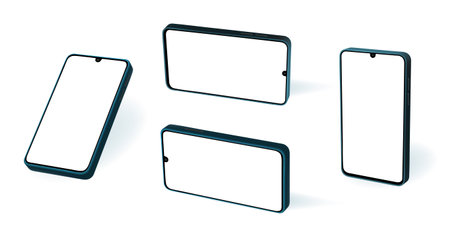1. Introduction: The British Love Affair with Small Spaces
There is a distinct romance woven into the very fabric of British homes—one defined by snug proportions, clever design, and an enduring sense of cosiness. From the terraced houses lining London’s leafy lanes to the historic cottages tucked within rural villages, British architecture has long celebrated compact living. These charming abodes carry with them centuries of tradition, where every alcove tells a story and each window frames a vignette of everyday life. Yet, nestled within this affection for intimate spaces lies a perennial challenge: how to maximise spatial perception without sacrificing character. As urban density grows and heritage properties remain prized, British homeowners and designers alike have become adept at using visual trickery—mirrors, glass, and light—to transform limited square footage into environments that feel airy and expansive. This ongoing quest to make small spaces feel generous is not only about practicality but also about celebrating the unique beauty found in the artful interplay between space, light, and reflection.
2. Mirrors: Crafting Depth with Classic British Elegance
Within the storied walls of British homes, mirrors have long played a quietly transformative role. From the grandiose Victorian overmantels—adorned with intricate carvings and gilt finishes—to the crisp lines of contemporary geometric installations, the strategic placement of mirrors is an artful means to conjure space and light. In compact London flats or quaint Cotswold cottages, mirrors are more than reflective surfaces; they’re design statements that weave heritage with innovation.
The Art of Placement: Maximising Light and Perspective
British interiors often contend with narrow corridors and modest proportions. By positioning a mirror opposite a window, natural daylight is captured and amplified, lending even the cosiest spaces a brighter, airier aspect. For those seeking to evoke period charm, a statement mirror above a fireplace not only frames the hearth—a classic focal point in UK living rooms—but also doubles the sense of grandeur without encroaching on floor space.
Traditional vs Modern Mirror Styles
| Mirror Style | Era/Influence | Best Placement | Effect on Space |
|---|---|---|---|
| Victorian Overmantel | 19th Century Heritage | Above Fireplace | Adds opulence & depth |
| Art Deco Panelled Mirror | 1920s Glamour | Hallways or Dining Rooms | Creates visual drama & elongation |
| Modern Geometric Installation | Contemporary Design | Stairwells or Feature Walls | Introduces rhythm & expands sightlines |
| Circular Minimalist Mirror | Scandi/British Blend | Bathrooms or Entryways | Smooths harsh angles & softens space |
Bespoke Solutions for Unique British Spaces
No two British homes are quite alike, making bespoke mirrored solutions particularly valuable. Consider mirrored alcoves in Victorian terraces to accentuate verticality, or custom-cut mirrors along cottage staircases to draw the eye upwards. With an understanding of both architectural history and modern lifestyle needs, mirrors become more than decorative flourishes—they are essential tools for spatial alchemy in every corner of the British home.

3. Glass Elements: Breathing Life into Interiors
Within the tapestry of British homes, glass elements have become silent maestros, conducting light and crafting new spatial narratives. From the grandeur of Georgian sash windows to the sleekness of contemporary partitions, glass bridges tradition with innovation. Glass partitions elegantly divide open-plan living areas without severing connection or compromising natural daylight—a subtle nod to the British penchant for both privacy and conviviality. These transparent barriers dissolve visual boundaries, allowing rooms to flow seamlessly, making even the cosiest of London flats feel airy and expansive.
Glass doors, whether in the form of classic crittall frames or understated glazed panels, invite sunlight deeper into the home’s heart. Their reflective surfaces amplify daylight on those typically overcast British afternoons, creating interiors that glow with an understated luminosity. This interplay between glass and light evokes a gentle sense of openness while preserving the warmth and intimacy so prized in traditional British dwellings.
Furnishings featuring glass—be it a vintage display cabinet showcasing delicate bone china or a minimalist coffee table resting atop an oak floor—act as visual punctuation marks within a room. They contribute to an uncluttered aesthetic, reflecting not just light but also the storied craftsmanship of British artisans. Many pieces are still hand-finished by skilled glaziers, drawing upon centuries-old techniques that champion both durability and decorative detail.
In essence, glass elements breathe vitality into interiors by connecting spaces, celebrating heritage, and maximising every drop of precious daylight. For homeowners seeking to honour Britain’s rich design legacy while embracing modern sensibilities, glass is both a window into tradition and a portal to endless spatial possibility.
4. Harnessing Natural and Artificial Light
Light is the secret ingredient that transforms modest British interiors into inviting, expansive sanctuaries. By blending both natural and artificial illumination, homeowners can effortlessly enhance the perception of space while honouring time-honoured British design traditions.
Daylight Optimisation through Heritage Features
Traditional sash windows are a quintessential element in period homes across the UK. Their vertical sliding mechanism not only preserves architectural authenticity but also maximises daylight penetration. Positioning furniture away from these windows ensures light floods deeper into the room, while using light-filtering voile curtains maintains privacy without sacrificing brightness.
Benefits of Skylights in Compact Spaces
For top-floor flats or Victorian terraces with limited wall space, skylights offer a transformative solution. They bring direct sunlight into the heart of a home, illuminating stairwells or narrow corridors otherwise prone to gloom. Modern skylight designs can be seamlessly integrated within heritage properties, striking a balance between innovation and tradition.
Lighting Fixtures: A Nod to British Heritage
Thoughtfully chosen lighting fixtures further refine ambience and spatial perception. Classic brass sconces, glass pendant lights, and candle-style chandeliers evoke the charm of Georgian and Edwardian interiors. Pair these with dimmable LED bulbs to adjust mood for every occasion—be it morning tea or a cosy evening gathering.
Comparative Techniques for Enhancing Light
| Technique | Heritage Value | Space-Enhancing Benefit | Best Used In |
|---|---|---|---|
| Sash Windows | High – Iconic in Georgian/Victorian homes | Maximises daylight; preserves period charm | Living rooms, bedrooms, dining areas |
| Skylights | Moderate – Contemporary twist on traditional features | Adds vertical light; brightens dark corners | Attics, landings, bathrooms |
| Heritage Lighting Fixtures | High – Echoes classic British aesthetics | Casts warm ambience; creates visual interest | Hallways, libraries, lounges |
The interplay between mirrors, glass elements, and carefully curated lighting draws upon both historical reverence and modern ingenuity. By weaving these techniques together, even the cosiest British home can feel grander—inviting light to playfully dance across every surface.
5. Design Inspirations from Quintessential British Homes
British homes, whether nestled in bustling city streets or the tranquil countryside, offer a wealth of inspiration for those seeking to amplify small spaces through clever design. In urban London flats, for instance, oversized antique mirrors are often strategically positioned above mantelpieces or along narrow hallways. These mirrors not only reflect the intricate period details—think cornicing and original fireplaces—but also bounce natural light from sash windows across the room, visually doubling the space and imbuing it with heritage charm.
Charming Cottages: Embracing Light and Character
Cotswold cottages, with their thick stone walls and modest proportions, demonstrate how glass and light can be harnessed to celebrate both tradition and liveability. Homeowners frequently replace heavy drapes with understated linen blinds, allowing daylight to filter through leaded windows. Meanwhile, glass doors between kitchen and sitting room create subtle sightlines, making the interiors feel airier without compromising on cosiness—a quintessentially British balance.
Townhouse Elegance: Layering Reflections and Transparency
In classic Georgian or Victorian townhouses found in cities like Bath or Edinburgh, designers layer reflective surfaces—mirrored alcoves, glass-topped side tables, even mirrored splashbacks in compact kitchens. The interplay of these elements multiplies the effect of tall ceilings and deep skirtings, ensuring each room feels stately yet welcoming. Skylights over staircases or glazed internal partitions further draw daylight deep into the heart of the home, enhancing both visual spaciousness and architectural drama.
Bespoke Touches: British Ingenuity in Small Spaces
Across Britain’s diverse housing stock, inventive touches abound: folding glass screens separating bedroom nooks in studio apartments; mirrored wardrobes that merge seamlessly into panelled walls; even vintage etched-glass panels reclaimed from old pubs repurposed as decorative dividers. Each solution celebrates British resourcefulness and an eye for detail—proof that with a dash of visual trickery, even the cosiest corner can feel expansive, elegant, and unmistakably at home.
6. Modern Interpretations for Contemporary British Living
The evolution of British interiors has always been a dialogue between heritage and innovation, particularly in small-space design. Today’s designers and homeowners are embracing this dynamic by marrying time-honoured materials—such as bevelled mirrors, stained glass, and traditional leaded windows—with bold, modern forms and understated palettes. This fusion not only pays homage to the UK’s rich architectural history but also pushes the boundaries of spatial illusion in compact urban flats and charming period terraces alike.
Layering Classic Craftsmanship with Minimalist Lines
Contemporary British interiors frequently showcase bespoke glass partitions that subtly separate zones while preserving an airy, open feel. Artisanal techniques, like hand-silvered mirror finishes or etched glass panels, are employed alongside sleek steel frames and clean-lined cabinetry. The interplay between old-world craftsmanship and modern minimalism creates a uniquely British sense of refinement—where each surface reflects both light and lineage.
Harnessing Light for Everyday Elegance
Natural light remains a prized asset in the UK, especially given its often grey climate. Designers make clever use of skylights, internal windows, and oversized mirrors positioned to catch every available sunbeam. The result is an almost ethereal luminosity, transforming even the most modest Victorian terrace or converted warehouse into a luminous haven that feels far larger than its square footage suggests.
A New Chapter in Small-Space Aesthetics
What defines today’s British approach is not simply the use of mirrors or glass itself but the thoughtful curation of these elements to suit both classic and contemporary tastes. Whether it’s a Georgian flat reimagined with mirrored alcoves or a new-build apartment featuring frameless glass balustrades, there’s a growing appreciation for spaces that balance historical character with modern clarity. Through inventive applications of visual trickery—rooted in both tradition and forward-thinking design—British homes continue to prove that even the smallest spaces can tell grand stories.

